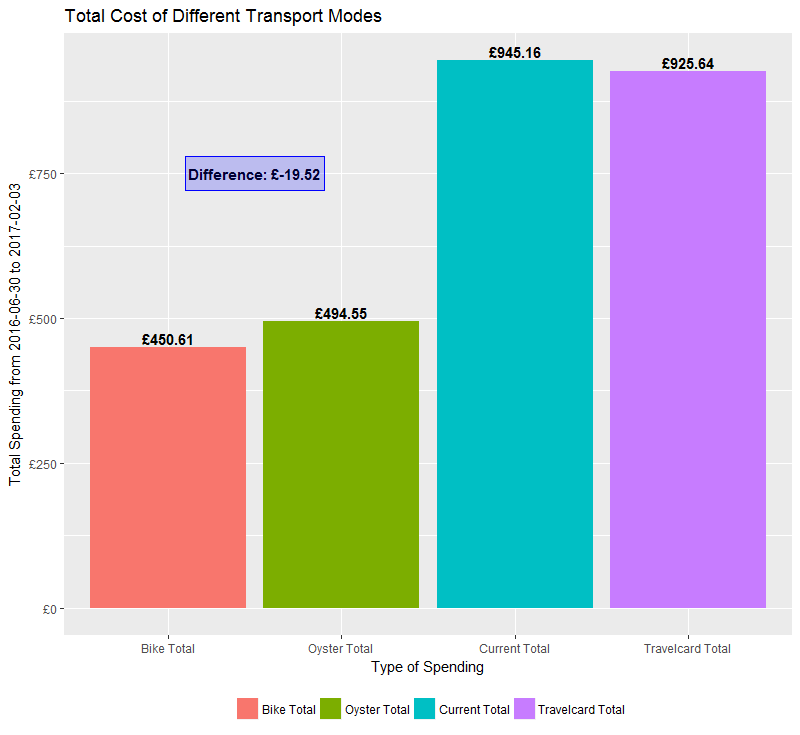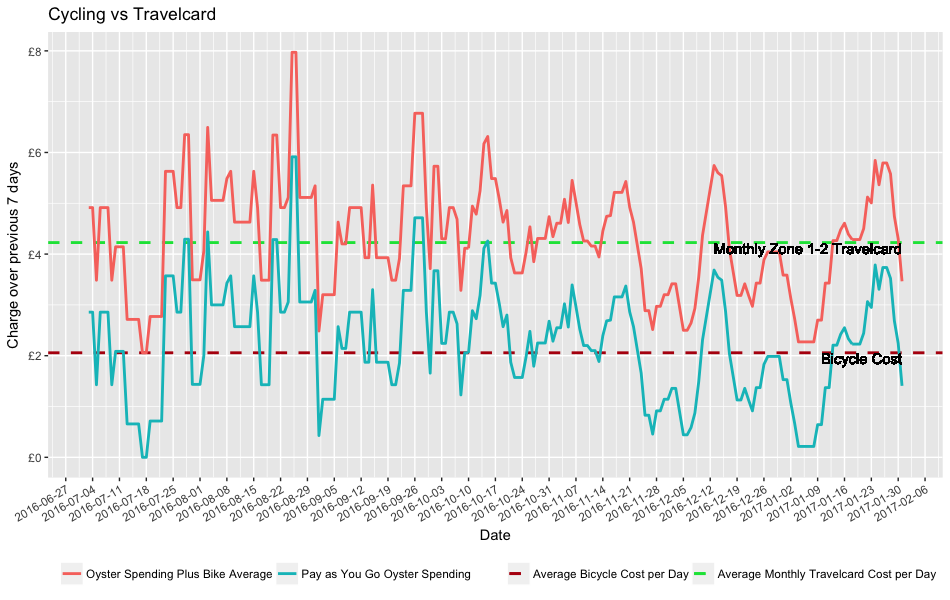In June, after changing to a new job with an office not too far from my house, I bought a bike and started riding to work. Part of my motivation for buying a bike to ride to work was to save money, but over my first seven months of riding I spent more on my bike and pay-as-you-go Oyster card than I would if I simply bought monthly transit passes and took the bus to work. Not that much more, just shy of £20, but I have still, so far, lost money.
Can you save money cycling to work? In theory yes, as a bicycle costs far less to buy and maintain than a car, and a good bike can be had for the same cost a couple months’ worth of transit passes. But this assumes that you’re replacing all other commuting with riding your bike, and virtually everyone will have to use some other form of transport, at least occasionally. And the costs of a bike are more than just the bike itself, but include maintenance and accessories, and if you want to latest and greatest weatherproof cycling gear commuting by bike can turn into a very expensive hobby very quickly. In this blog post I examine my own commuting habits, to see if my decision to buy a bike really is saving me money.
As of 3rd February, this gives me 219 days of travel around London, including commuting and all other travel. As you can see in the bar chart below, I spent £19.52 more on cycling and a pay-as-you-go Oyster card than I would have spent on a travelcard. My cycling costs include my bike (£200), a bike locker rental (£60, pro-rated to £36 for the amount of time I have so far used it), and various other accessories. I already owned a lock and helmet, but bought new lights, a helmet-cam, a pollution mask and various tools and spare parts. If I had stuck to the bare necessities - a good lock, lights and my helmet - I would have already broken even financially, but where is the fun in sticking to the bare minimum?
Figure 1 - Total Spending

The red and green bars are total spending on my bike and related accessories and my pay-as-you-go Oyster spending, respectively. The blue bar is the combined total of bicycle and pay-as-you-go spending, and the purple bar is the hypothetical total spending of monthly travelcards covering 30 June 2016 to 03 February 2017.
The main source of variance in my travel spending is my Oyster card. Over 219 days, my total bike spend averages out to just under £2.06, compared to £4.23 per day for a monthly zone 1-2 travelcard. As the time series below shows, my pay-as-you-go spending can vary considerably. There is a big drop in pay-as-you-go spending around the end of November, which is the first time I decided to crunch these numbers, and that prompted a change in my behaviour. I stopped taking the bus to work on days where I felt tired or lazy, and started cycling every day unless I had good reason to do otherwise.
Figure 2 - Time Series

The green horizontal line represents the average daily cost of a monthly zone 1-2 travelcard in London (£4.23 per day), and the burgundy horizontal line represents the average daily cost of my bicycle and accessories (£2.06 per day). The light blue line is a rolling monthly average of daily pay-as-you-go Oyster spending, and the light red line is pay-as-you-go Oyster spending combined with daily bike costs.
Despite not saving me any money, I still think that cycling to work has been a good idea. For one thing, cycling is by far the fastest way for me to get to my office, and is usually the quickest way to get around London. It is also great exercise, and has meant I’ve ridden through parts of London I would never otherwise visit. And the longer I cycle for, the more likely it is I will end up saving money. The costs of cycling are certainly front-loaded; for instance my bike has so far cost 91p per day of ownership, by the end of June, after one year of cycling, that cost will drop down to just under 55p per day.
The code and data I used in this post is available on Github.
Addendum 8 February: I have a 16-25 railcard attached to my Oyster card which reduces off-peak fares and fare caps by 1/3. Without the railcard my ‘losses’ from cycling and pay-as-you-go would be greater.
Addendum 28 April: I have now created a live (as in updated every few days) app to display my actual versus hypothetical transportation spending.